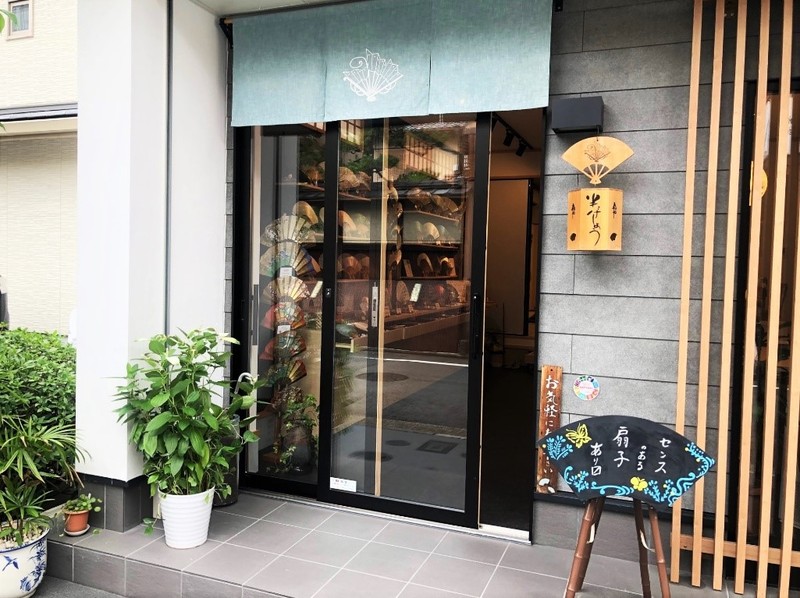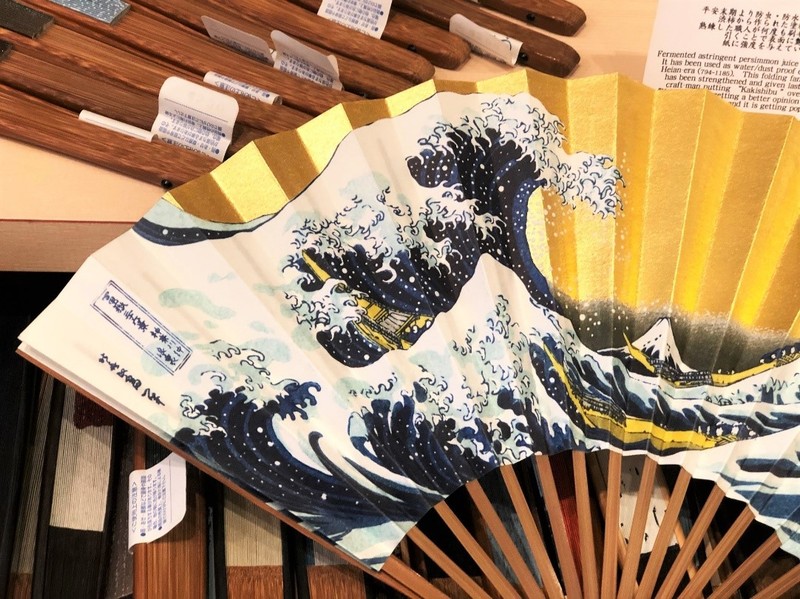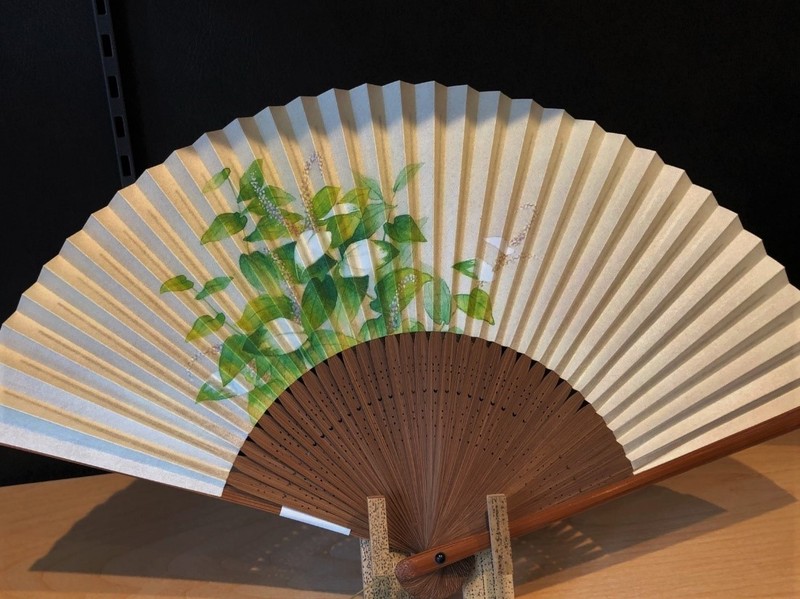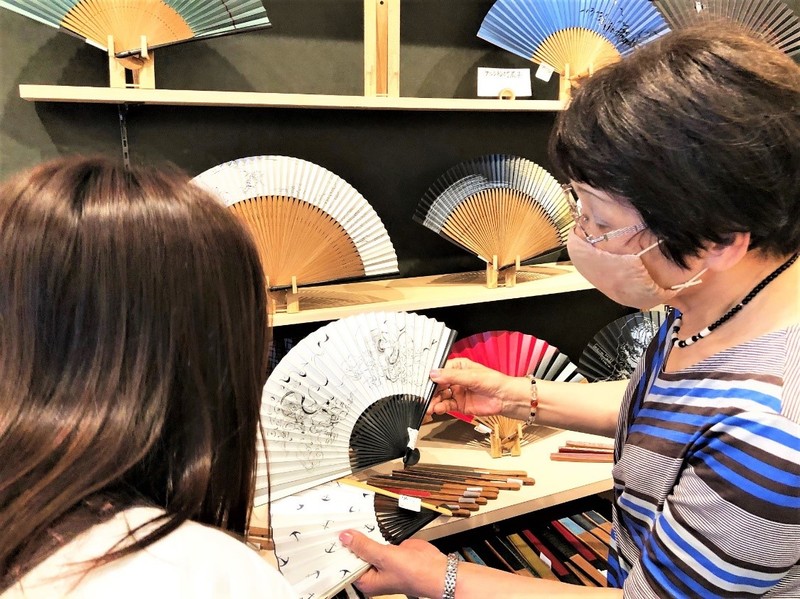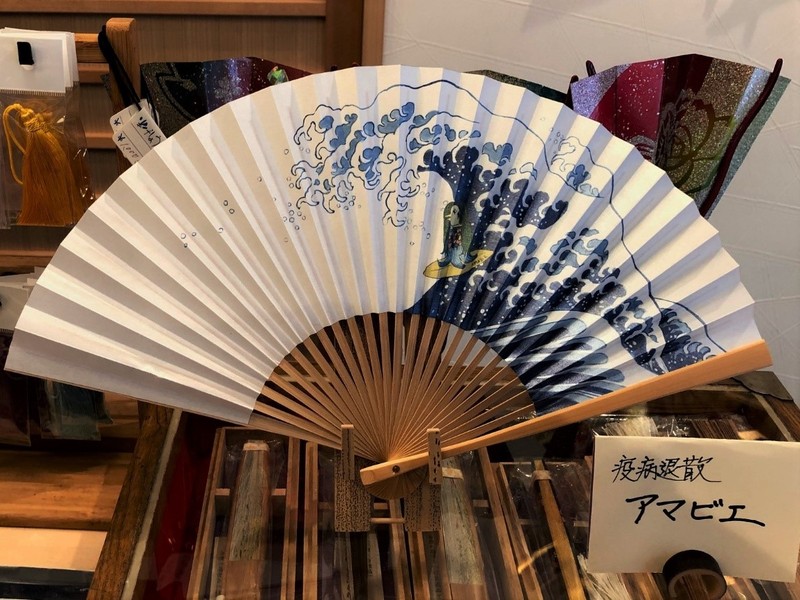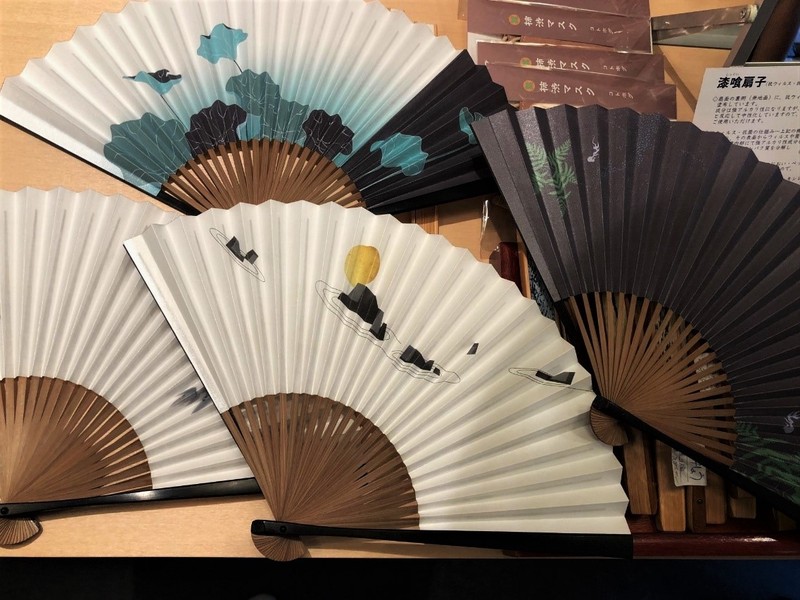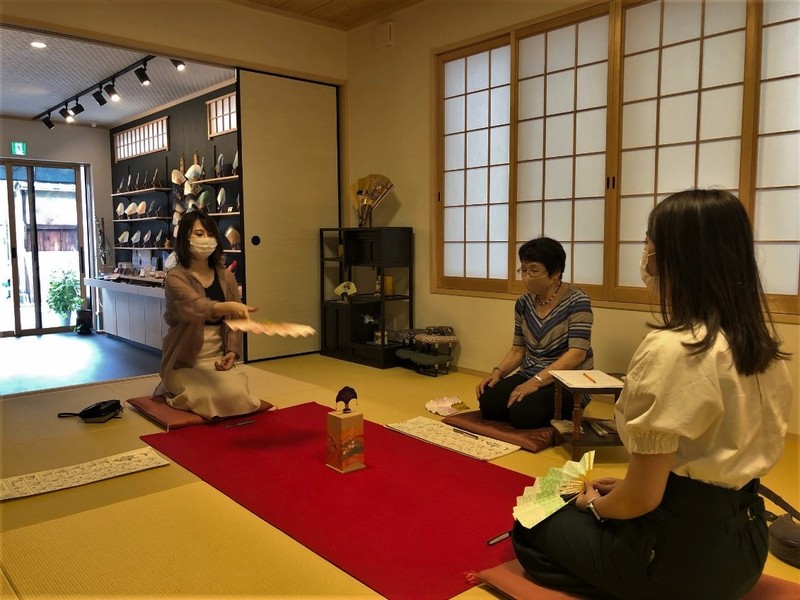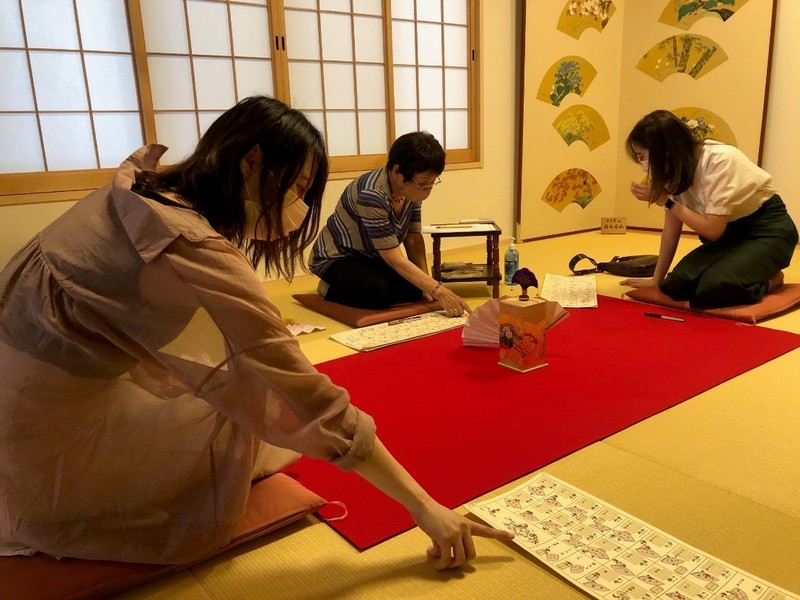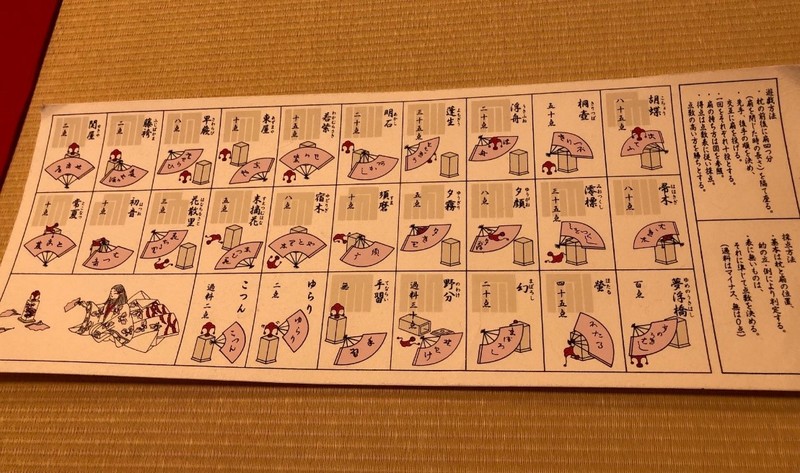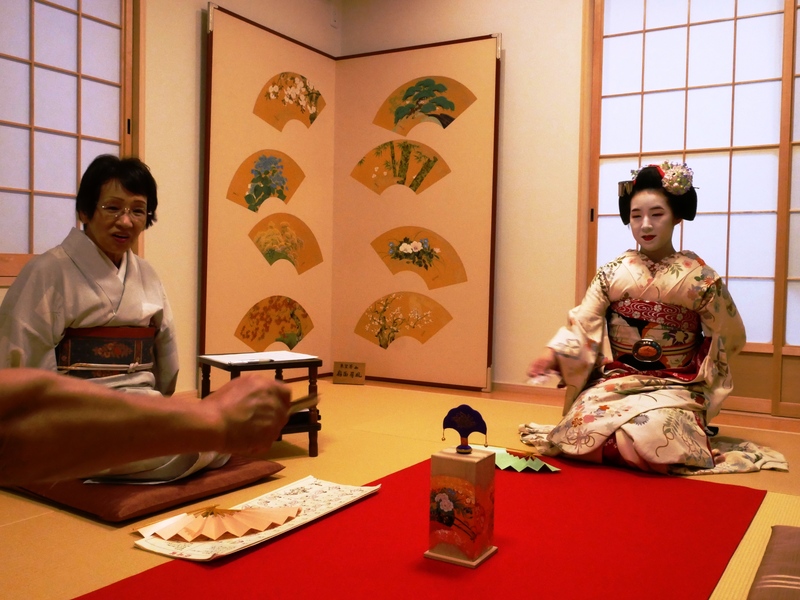- HOME >
- Experience report >
- 【KYOTO VOICES】 Experience report >
- Kyoto fans, a must-have accessary for summer in Kyoto Find your favorite at a hidden store in the Geisha district of near Miyagawa-cho
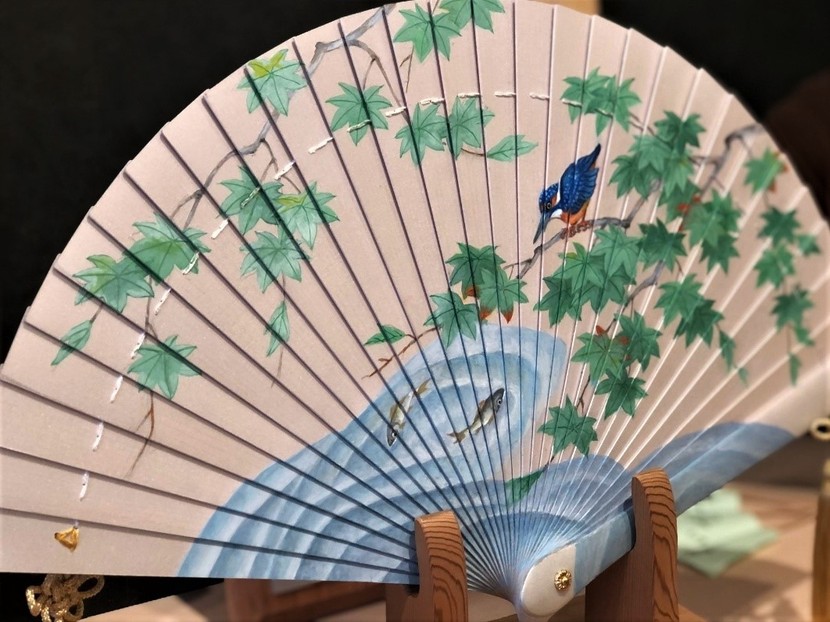
Kyoto fans, a must-have accessary for summer in Kyoto Find your favorite at a hidden store in the Geisha district of near Miyagawa-cho
Situated in a basin and circled on three sides by tall mountains, Kyoto is infamous for its summer heat. A fan is a must-have item in the old capital Kyoto for the torrid months. Today, I would like to introduce you to a fan store where you can find a perfect small gift for your friends, and of course you will want to buy one for yourself!
A Traditional handy craft originated in Kyoto, the capital of Japan for1,000 years and still the perfect accessary in your modern life
Kyoto fans are said to have originated in the early Heian period (794-1185) and were used for ceremonies by the emperor and noble families. With the development of Noh plays, tea ceremony, and incense ceremony in Kyoto, the technique and artistry of the fan has continued up to present day.
There is a wide variety of materials, colors, and patterns used for "Kyo Sensu," from dancing fans used for Japanese dances, decorative fans for interior decoration, to those for practical daily use. You can purchase any and all such fans at "Ogiya HANGESHO".
About a five-minute walk from Kiyomizu Gojo Station on the Keihan Railway or Kawaramachi Gojo bus stop, by Kyoto City Bus, the store is located in a quiet residential area. It is crammed from floor to the ceiling with traditionally made Kyoto fans crafted made in the company's nearby workshop.
A fan for men with a Ukiyoe or floating world motif. It makes a stunning impact when you open the fan.
Fan decorated with "hangesho or early summer motif". The store is named after this floral pattern. The delicate design is a favorite for women.
Experience a variety of unique designs to suit the personality of the owner
The prices of Hangesho's fans vary depending on the pattern, material, and specifications, but they are mostly in the 3,000yen range.
Don't worry if you are not sure which one to choose. The owner, Mrs. Nishino, will give you gentle and insightful advice. Mrs. Nishino's ideas and sensibility are reflected in the designs of the fans, such as those with lacquer paint and those with traditional patterns arranged in a modern style.
Mrs. Nishino set up a store near Miyagawa-cho to directly deliver to customers the fans made in her family-owned workshop that has been in operation since the late Meiji era. She is also making efforts to develop new products in line with the times.
They also created a new design featuring Amabie, a Japanese yokai monster believed to be able to combat plagues. Perfect accessary for current time.
In keeping with this theme new product includes an antibacterial plaster finish on the back.
Experience Tosenkyo, a game that has been handed down since the Edo period
At "Hangesho", you can experience Tosenkyo in the tatami room at the back of the store. The game is played by gently tossing a fan at a ginkgo leaf - shaped target placed on a wooden box and scoring points according to the shape of the fan and the target as they fall. The game is played in a relaxed and easy way, using a scoring chart created by Mrs. Nishino and her daughter.
If you use too much force or too little, you will not hit the target properly. Mrs. Nishino said to put the fan on top of the wooden box.
There are 27 types of targets and the way the fans fall. Each point is named after the chapter in The Tale of Genji, a classic of Japanese literature and the world oldest novel.
A minimum of two people is required to reserve the "Tosenkyo" experience. If you book in advance, you can spend a unique time with a maiko, entertainer from Miyagawa-cho, a nearby traditional entertainment district.
A single fan conveys the traditions of Kyoto and the skills of its craftsmen.
It is said that a Kyoto fan "passes through the hands of craftsmen 87 times," and the process is divided into dozens of detailed steps, with a complete division of labor. This is common among many Japanese traditional crafts such as kimono weaving and sword making. Each craft man brings to the production process their unique skill in a team effort and finally produces superbly beautifully and functional object.
Times have changed and Japanese lifestyles have changed, but the basic manufacturing method of Kyoto fans has remained unchanged. The craftsmen in each process finish the work with pride and responsibility, and pass it on to the next craftsman, and finally, it is sent out to the world as a single fan. While cooling off in style this summer whose love for this craft made your style comfort possible.
Latest articles
-
 CATCH THE SPIRIT21.11.27
CATCH THE SPIRIT21.11.27- temples
- kyotowalks
-
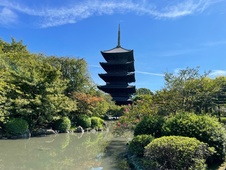 CATCH THE SPIRIT21.11.12
CATCH THE SPIRIT21.11.12- temples
- kyotowalks
-
 CATCH THE SPIRIT21.10.29
CATCH THE SPIRIT21.10.29- nara
- autumn
- nature
-
 CATCH THE SPIRIT21.10.15
CATCH THE SPIRIT21.10.15The cosmoses swayed in the autumn breeze under the blue sky, Kyoto Botanical Gardens
- photography
- flowers
- autumn
-
 CATCH THE SPIRIT21.09.03
CATCH THE SPIRIT21.09.03Witness the march of Kyoto architecture over 100 years on Sanjo Street - Part 2 -
- kyotowalks
- street




















